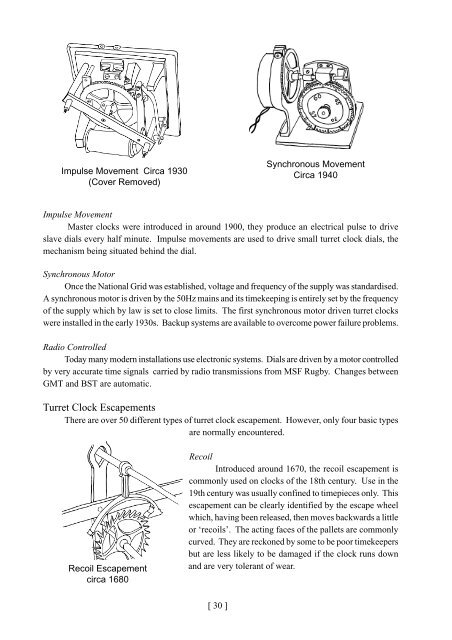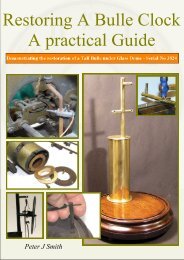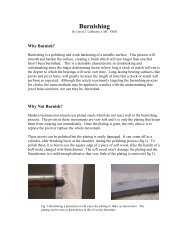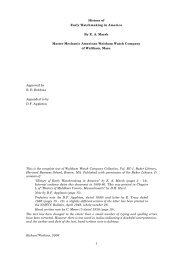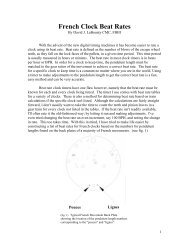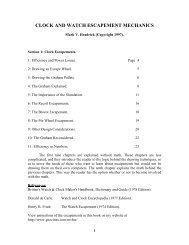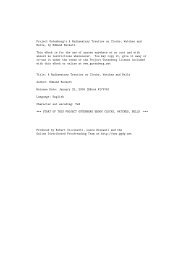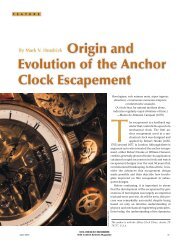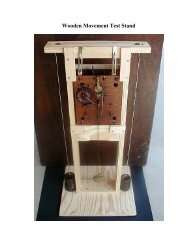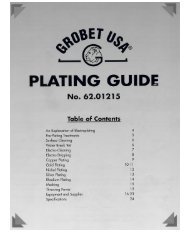THE TURRET CLOCK KEEPER'S HANDBOOK - Horology - The Index
THE TURRET CLOCK KEEPER'S HANDBOOK - Horology - The Index
THE TURRET CLOCK KEEPER'S HANDBOOK - Horology - The Index
You also want an ePaper? Increase the reach of your titles
YUMPU automatically turns print PDFs into web optimized ePapers that Google loves.
Impulse Movement Circa 1930<br />
(Cover Removed)<br />
Impulse Movement<br />
Master clocks were introduced in around 1900, they produce an electrical pulse to drive<br />
slave dials every half minute. Impulse movements are used to drive small turret clock dials, the<br />
mechanism being situated behind the dial.<br />
Synchronous Motor<br />
Once the National Grid was established, voltage and frequency of the supply was standardised.<br />
A synchronous motor is driven by the 50Hz mains and its timekeeping is entirely set by the frequency<br />
of the supply which by law is set to close limits. <strong>The</strong> first synchronous motor driven turret clocks<br />
were installed in the early 1930s. Backup systems are available to overcome power failure problems.<br />
Radio Controlled<br />
Today many modern installations use electronic systems. Dials are driven by a motor controlled<br />
by very accurate time signals carried by radio transmissions from MSF Rugby. Changes between<br />
GMT and BST are automatic.<br />
Turret Clock Escapements<br />
<strong>The</strong>re are over 50 different types of turret clock escapement. However, only four basic types<br />
are normally encountered.<br />
Recoil Escapement<br />
circa 1680<br />
Recoil<br />
Introduced around 1670, the recoil escapement is<br />
commonly used on clocks of the 18th century. Use in the<br />
19th century was usually confined to timepieces only. This<br />
escapement can be clearly identified by the escape wheel<br />
which, having been released, then moves backwards a little<br />
or ‘recoils’. <strong>The</strong> acting faces of the pallets are commonly<br />
curved. <strong>The</strong>y are reckoned by some to be poor timekeepers<br />
but are less likely to be damaged if the clock runs down<br />
and are very tolerant of wear.<br />
[ 30 ]<br />
Synchronous Movement<br />
Circa 1940


